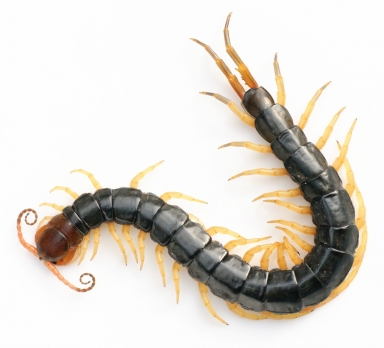 I’m dreading the day I get knocked up, since I know that my incredibly low pain threshold will have trouble dealing with the crazy horror that is childbirth.
I’m dreading the day I get knocked up, since I know that my incredibly low pain threshold will have trouble dealing with the crazy horror that is childbirth.
That’s why I was overjoyed to hear of some new research from Australia, where a new high-strength painkiller has been isolated from the venom of the Chinese red-headed centipede, Scolopendra subspinipes mutilans.
In the insect world, centipedes are king of the hill – their venom is debilitating to their prey, helping them to capture fish, lizards, frogs and even small mammals.
Centipede venom is made up of a complex cocktail of proteins, each designed to disengage a particular biological pathway. Researchers isolated one of these proteins, µ-SLPTX-Ssm6a, and found that it blocked a specific pain receptor known as the voltage-gated sodium channel, Nav1.7.
For several types of chemical-, temperature- or acid-based pain, µ-SLPTX-Ssm6a provided better pain relief than the current gold standard, morphine. Happily, no side effects were observed.
So, µ-SLPTX-Ssm6a is a great new drug candidate for human pain relief. And since other beastie-derived venom proteins are already in clinical use – like PRIALT from the marine cone snail – µ-SLPTX-Ssm6a could make it to market before I find me a baby daddy.
Yang S, Xiao Y, Kang D, Liu J, Li Y, Undheim EA, Klint JK, Rong M, Lai R, & King GF (2013). Discovery of a selective NaV1.7 inhibitor from centipede venom with analgesic efficacy exceeding morphine in rodent pain models. Proceedings of the National Academy of Sciences of the United States of America, 110 (43), 17534-9 PMID: 24082113






This study is interesting. Considering all three co-first authors are from China, It’s better not to say “new research from Australia”. It’s a collaboration work by Chinese and Australian scientists.
Hi Di,
Thanks for your comment. I’m glad you find the topic interesting!
Quoting the location of collaborative work can be a murky challenge. As you can see, I often go by the location of the last author, who is typically running the show. You could also go by lead author location or, as you suggest, simply point out that it’s an international multi-centre study.
Lots of possibilities, and lots of personal preferences, making everything simultaneously wonderful yet challenging!